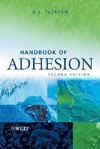Lower Oil Prices, Recovery of End Use Markets Boost American Chemistry Growth

Despite facing global headwinds, American chemistry expanded at a healthy 2% growth rate in 2014, and is expected to reach a 3.7% gain in output in 2015 before hitting 3.9% in 2016, according to the “Year End 2014 Chemical Industry Situation and Outlook,” published by the American Chemistry Council (ACC). The report’s consensus is that U.S. chemical output will continue to expand well into the second half of the decade, exceeding that of the overall U.S. economy.
“The appreciation of the dollar, coupled with increased domestic supply of unconventional oil and gas, is helping to drive oil prices down,” said Kevin Swift, Ph.D., chief economist. “In turn, manufacturing costs are reduced, production is stimulated, inflation restrained, and consumer confidence, along with purchasing power and spending, is boosted.”
That boost in spending power has contributed to gains in key end-use markets, including light vehicle sales ($3,500 of chemistry per unit) and housing ($15,000 of chemistry per start). Light vehicle sales saw an increase of nearly 5.2% over 2013, and production continues to improve, with sales expected to rise further in 2015 as pent-up demand, improving employment prospects, and increased availability of credit foster growth. Though the housing outlook remains cautious, inventories and interest rates remain low. Job growth, a major long-term driver for housing, is improving, as seen in the 7.5% increase in housing starts between 2013 and 2014. Though activity will remain well below the previous peak of 2.07 million units in 2005, by the second half of the decade, activity will approach the long-term underlying demand of 1.5 million units per year.
Basic chemicals were hardest hit from recessions in Japan and Brazil. Strong growth is now expected in inorganic chemicals, organic chemistry, plastic resins, and synthetic rubber as most export markets revive. In 2014, inventories remained balanced, so any increased demand in 2015 will require new production, said Swift. “This year’s gains were led by consumer chemistries and specialties, but advances in manufacturing and exports in 2015 will drive increased demand for basic chemicals, especially in those segments in which the U.S. enjoys a renewed competitive advantage,” he said. “The wind is back in our sails. During the second half of the decade, U.S. chemistry growth is expected to expand at a pace of more than 4% per year on average, exceeding that of the overall U.S. economy.”
For more information, visit www.americanchemistry.com.
Looking for a reprint of this article?
From high-res PDFs to custom plaques, order your copy today!








